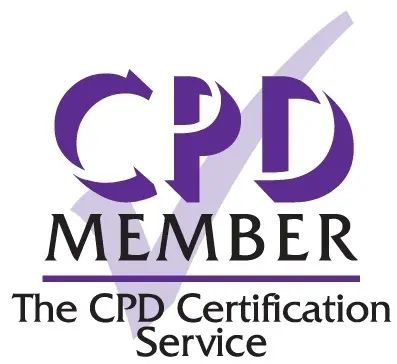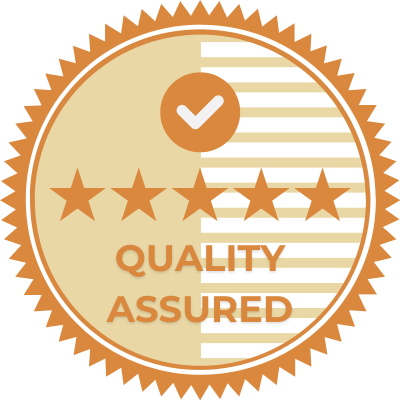Introduction to ISO 22000
Food safety has become a cornerstone of the modern global food supply chain, where complex production and distribution networks demand meticulous oversight. With increasing consumer awareness of food safety risks, organisations must implement robust systems to ensure both safety and quality.
From small local cafés in Brighton to large-scale food processing facilities in Birmingham, every organisation plays a vital role in protecting public health and maintaining consumer trust. High standards of food safety are no longer optional - they are essential for ensuring business success in today’s interconnected food industry.
Managing food safety effectively means addressing a range of potential hazards such as biological, chemical, and physical, while maintaining traceability and applying systematic risk management. Professionals in the food sector must constantly evaluate and improve their processes to meet these challenges head-on.
Reflection point
How do you currently monitor food safety in your workplace? Are there areas where processes, documentation, or training could be improved?
By adopting structured frameworks like ISO 22000, businesses can build a proactive culture of food safety that benefits both consumers and the organisation itself.
At FoodComplianceHQ.com, we’re committed to supporting businesses in developing systems that align with international standards, ensuring food safety and operational excellence.
What is ISO 22000?
ISO 22000 is a globally recognised standard designed to enhance food safety management across the entire food supply chain. Developed by the International Organisation for Standardisation (ISO), this framework provides a comprehensive approach to identifying, preventing, and managing food safety risks from farm to fork.
Unlike other standards that focus on specific sectors, ISO 22000 is flexible, making it suitable for all organisations.
Key elements of ISO 22000 include:
- Interactive communication: Facilitates collaboration across the supply chain.
- System management: Focuses on integrating food safety into overall business management.
- HACCP principles: Provides a risk-based framework for identifying and managing hazards.
- Prerequisite programmes: Establish foundational safety and hygiene standards.
Reflection point
Evaluate your current food safety practices. Do you conduct systematic checks, document processes, and ensure staff are trained in food safety protocols?
For British food businesses, ISO 22000 offers a structured way to enhance safety and demonstrate commitment to quality - an essential step in maintaining trust and navigating today’s complex food networks.
Importance of ISO 22000 Food Safety Management System
ISO 22000 represents a vital tool for managing food safety risks effectively. By systematically identifying, mitigating, and preventing hazards, organisations can protect public health and reinforce consumer confidence.
This standard provides more than just compliance; it empowers businesses to improve processes, streamline operations, and ensure continuous improvement.
Key Benefits Include:
- Proactive risk management: Identify hazards early and take preventative action.
- Enhanced consumer confidence: Demonstrate your commitment to food safety.
- Operational reliability: Standardise procedures for consistent results.
Reflection point
How do you manage contamination risks in your food production environment? Are your team members trained to identify and respond to safety issues effectively?
By adopting ISO 22000, organisations gain more than certification - they establish a foundation for long-term success, quality assurance, and market competitiveness.
ISO 22000 Requirements
Implementing ISO 22000 requires a comprehensive and systematic approach. The standard encompasses several critical components to ensure robust food safety management.
Key Requirements Include:
- Management systems: Establish clear protocols for communication, documentation, and operational controls.
- Prerequisite programmes: Address essential elements like facility hygiene, pest control, and staff training.
- HACCP integration: Conduct hazard assessments, identify critical control points, and implement control measures.
- Documentation and record-keeping: Maintain detailed logs for audits, including risk assessments, monitoring reports, and corrective actions.
- Leadership commitment: Ensure top management actively supports food safety initiatives, from resource allocation to policy development.
Reflection point
Are your hygiene practices and hazard controls thoroughly documented and consistently implemented?
How to Get ISO 22000 Certification
Achieving ISO 22000 certification involves several strategic steps.
Steps to certification:
- Gap analysis: Evaluate your current food safety systems against ISO 22000 standards.
- Develop an FSMS (Food Safety Management System): Integrate HACCP principles and prerequisite programmes into your operations.
- Staff training: Educate your team on hazard identification, risk management, and ISO requirements.
- Choose a certification body: Work with an accredited organisation like UKAS for your audit.
- Certification audit: External auditors will assess your documentation, processes, and compliance.
Reflection point
What mechanisms can you implement to ensure continuous improvement in food safety management?
Once certified, maintain your status through regular audits and ongoing updates to your FSMS.
Benefits of ISO 22000 Certification
ISO 22000 certification delivers numerous advantages, positioning your organisation as a leader in food safety.
Key Benefits:
- Operational efficiency: Reduce waste and optimise workflows.
- Market credibility: Attract larger buyers and improve customer trust.
- Financial gains: Minimise risks, reduce legal liabilities, and lower insurance premiums.
- Global trade opportunities: Align with international standards for seamless market entry.
Reflection point
How can your organisation enhance its food safety protocols to achieve these benefits?
Conclusion
ISO 22000 is more than a standard—it’s a strategic framework that empowers organisations to prioritise safety, efficiency, and quality. By adopting its principles, businesses can navigate food safety challenges with confidence, protect public health, and elevate their reputation.
Key Takeaway: Food safety isn’t just about compliance; it’s about fostering trust and building a sustainable future for your business.
At FoodComplianceHQ.com, we’re here to support you with online training and resources.
Further Reading
For those looking to deepen their understanding of ISO 22000 and food safety management systems, consider exploring the following resources:
- ISO 22000: Guidelines for Independent Implementation—A practical guide designed to help organisations implement ISO 22000 without external consultants.
- ISO 22000:2018 Generic Model: ISO 22000:2018 Food Safety Management System—This book provides a comprehensive model for implementing the ISO 22000:2018 standard, offering practical insights and guidance.
- ISO 22000:2018, Second Edition: Food Safety Management Systems—Requirements for Any Organization in the Food Chain" – Authored by the International Organization for Standardization, this official publication details the requirements of ISO 22000:2018.
- Food Safety Management Systems (FSMS): Fundamental Guide to ISO 22000 Implementation & Auditing—This guide provides foundational knowledge for implementing and auditing ISO 22000-based food safety management systems.
- ISO 22000:2018 Food Safety Management Systems – FSMS Checklist – A comprehensive checklist designed to assist in auditing and implementing ISO 22000:2018 standards.
- ISO/FSSC 22000/FSMA Preventive Control Generic Model – This book integrates FSSC/ISO 22000 and FSMA preventive controls into a cohesive food safety management system.
- ISO 22000 Food Safety Management Quality Manual Pack – This manual pack describes how manufacturers can comply with ISO 22000:2005 and HACCP requirements, including quality manuals, codes of practice, protocols, and recommended systems.
- ISO 22000: Food Safety Management Systems – An Easy-to-Use Checklist for Small Business – This checklist is designed to help small businesses assess their readiness for ISO 22000 implementation.
- ISO 22000 Standard Procedures for Food Safety Management Systems – This resource provides standard procedures to help organisations comply with ISO 22000:2005 requirements, including HACCP plans, supplier evaluations, manufacturing, traceability, monitoring/measurement, internal auditing, and product recall.




